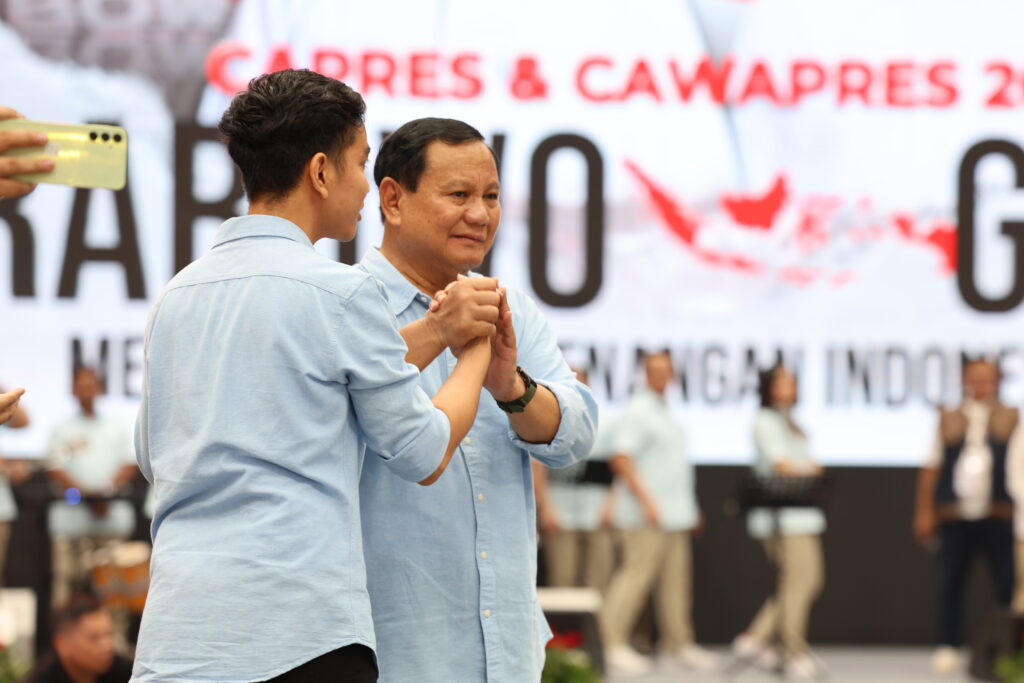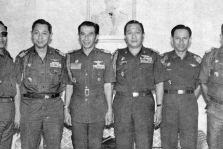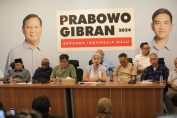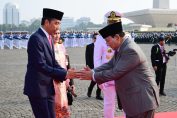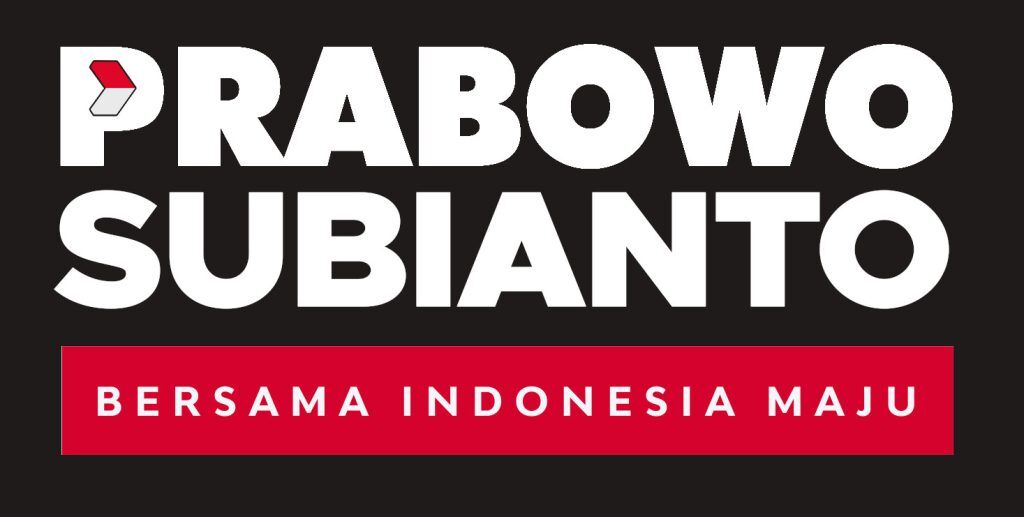By: Prabowo Subianto [extracted from “Strategic Transformation of the Nation: Towards Golden Indonesia 2045” pp. 56-70, fourth softcover edition]
Indonesia is currently facing one of its most critical economic issues: the persistent outflow of national wealth. A substantial portion of Indonesia’s generated economic wealth is stored and utilized overseas.
Wealth for a nation is like blood for a body; right now, Indonesia is hemorrhaging financially, a condition that has persisted for decades. If we extend this analogy back to the colonial period, it amounts to centuries of economic bleeding.
Those familiar with my longstanding views know that I have consistently highlighted how Indonesia’s wealth leaks out of the country every year—it doesn’t stay within our borders.
Effectively, all Indonesians are involuntarily working as laborers for others; we exert ourselves in our homeland only to bolster the prosperity of foreign nations. We are like tenants in our own house.
Historically, during the Dutch East India Company (VOC) era, the outward flow of our wealth was starkly evident, prompting challenges from the earlier Generation of ’45. The VOC was the most valuable company in economic history. At that time, economic growth in the Indonesian region was exceptionally high, possibly among the highest globally, yet the profits were banked in the Netherlands.
Today’s circumstances are akin to those of the past but are less overt, which makes them harder to detect. Those who are aware of this situation often choose silence or have resigned themselves to this reality. Some even facilitate the outward flow of our wealth.
To track how Indonesia’s wealth is drained abroad, we can look at several economic indicators:
Firstly, the trade balance of our nation, particularly the ownership structures of exporting companies.
Secondly, records of deposits in foreign banks belonging to Indonesian entrepreneurs and companies, as well as foreign firms that profit in Indonesia but keep their earnings overseas.
I started analyzing Indonesia’s export-import ledgers from 1997 while I was in Jordan, keen to grasp the actual state of our economy. Reviewing the period from 1997 to 2014, it turns out that over these 17 years, our total exports amounted to USD 1.9 trillion, yielding a trade surplus of roughly IDR 26.6 trillion, using an exchange rate of IDR 14,000. This figure is quite substantial.
However, it is crucial to note that these are the amounts reported in export documents. They might not accurately reflect the real value of exports. According to insights from many exporters and studies conducted by reputable research organizations, these figures could be underreported by 20%, 30%, or even up to 40%.
The Global Financial Integrity estimates that export leakages due to trade misinvoicing, or “errors” in recording the value and volume of exports, amounted to USD 38.5 billion in 2016, equivalent to approximately IDR 540 trillion or 13.7% of total trade.
From 2004 to 2013, the total leakage from these “errors” reached USD 167.7 billion—equivalent to about IDR 2.3 quadrillion at an exchange rate of USD 1 = IDR 14,000.
Furthermore, upon investigation, it became evident that much of our profit does not stay domestically. Thus, I was not surprised when in August 2016, the Finance Minister revealed that about IDR 11,400 trillion owned by Indonesian entrepreneurs and companies was parked overseas. This amount is 5 times greater than our current national budget and roughly equal to our Gross Domestic Product (GDP).
In addition to unreported or misreported exports by our entrepreneurs, the majority of Indonesia’s export profits go to foreign companies with accounts abroad. This occurs because most of the value from our exports is controlled by foreign companies operating in Indonesia.
These companies sell Indonesia’s natural resources. They use our roads, ports, and the labor of our people. Yet, when they profit, they do not keep their earnings in Indonesia. Moreover, some Indonesian entrepreneurs who engage in export and business activities here also choose to store and transfer some of their profits abroad.
This is a significant problem for our nation. If this money does not stay in Indonesia, it cannot be used to build our country. Our banks do not have enough capital to provide loans that could stimulate our economy. The expected economic multiplier effect that could invigorate Indonesia’s economy does not occur.
Is this a new problem? Looking back, it appears that the outflow of Indonesian wealth has been an issue for centuries. This is a systemic problem that we need to recognize and address.
If we look back to the 1950s, except during periods of upheaval, Indonesia’s export-import activities were profitable. But who benefited from these profits?
When we look back at Sukarno’s speech “Indonesia Menggugat,” it becomes clear that he addressed the very same issues. Whereas I reference figures in US dollars and Rupiah, Sukarno used the Guilder in his arguments.
The core issue Sukarno highlighted was the outward flow of our wealth, a persistent problem he eloquently detailed in his writings:
“For imperialists, Indonesia was unparalleled—a paradise unrivaled anywhere in the world for its sheer allure.
“By around 1870, the gates had been thrown open. As if driven by an increasingly fierce wind, a flood-swelling river, or the thunderous roar of an army conquering a city, the Dutch East Indies were transformed following the Dutch Staten-Generaal’s approval of the Agrarian Laws and the Sugar Act of De Waal in 1870. This led to an influx of private capital into Indonesia, spawning sugar factories, tea and tobacco plantations, and a range of other ventures including mines, railways, tramlines, shipping, and diverse manufacturing operations.
“For the Indonesian people, the post-1870 changes were simply a new method of resource extraction. To them, old and modern imperialism were indistinguishable—both were just means of siphoning Indonesian wealth overseas, continuing the pattern of economic exploitation.”
I recently encountered a study that revealed Dutch official records from 1878 to 1941. These documents detailed the profits from Indonesian exports, Dutch savings in Indonesia, and the budgets allocated for the Dutch colonization efforts.
This study showed that over a span of 63 years, the Dutch accumulated profits amounting to 54 billion Guilders. At that time, this sum was equivalent to USD 22 billion. Adjusted for today’s values, that would be roughly USD 398 billion, amounting to as much as USD 5.123 billion today — equivalent to IDR 66.599 trillion.
Bung Karno once criticized this massive outflow of our wealth, which he saw as capital flight from Indonesia. As someone not formally educated in economics, I refer to this as the “net outflow of national wealth”—an excessive leakage of our country’s financial resources.
I’ve often been questioned about the weak Indonesian currency and the volatile prices of basic necessities. The answer, though straightforward, seems to be something many Indonesian elites and economic experts are hesitant to discuss openly.
I have consistently stated that our national wealth does not remain within Indonesia. This is a fundamental problem.
We let our riches be siphoned off to other countries. Under such conditions, how can we expect our economy to thrive? How can prices remain stable for our citizens if our wealth continues to flow outward? I apologize if my words are blunt. Some advise me to “only highlight the positives,” while others suggest, “Mr. Prabowo, please tone it down. Speak gently.”
Over the past 15 years, whenever I’ve had the opportunity to present data, I’ve asked my audience: “Do you want me to speak nicely, or do you want the unvarnished truth? Do you prefer polite, comforting words or the stark reality?”
They always respond, “Just tell it like it is, Mr. Prabowo.”
In my opinion, Indonesia’s elites have not conveyed what truly happened. They have not been transparent to the people.
Why are the poor increasingly marginalized? Why do the rich get richer in Indonesia, and the poor get poorer? Why don’t our farmers smile at harvest time? How is it possible that in a country that has been independent for over 75 years, there are still contract teachers earning just IDR 200,000 a month? Even though there is now direct aid from Central and Regional Governments, it is still far from sufficient.
How can this be?
How is it that most of our national profits flow overseas while the elite remain silent? Tens of thousands of trillions of Rupiah that should be in Indonesia are parked abroad, yet the Indonesian elites are not striving hard to repatriate these funds.
It’s bitter, what I’m saying. But if we continue to see a net outflow of our national wealth every year, I think we don’t need long-term development plans as a country. We don’t need these plans because our people won’t benefit from them.
This money is vital for our nation’s future development. We can no longer afford to lose the wealth that should be circulating within our country.
If we let our wealth continuously flow out of the country, we are admitting that we are content to be just a market and labor pool for the global capitalist system.
Our resources are exploited, and our people are used to enrich other nations. We are set up to be mere consumers of foreign products and services.
We are full of rhetoric. Our people and leaders sing “Indonesia Raya” and “Maju Tak Gentar,” but our welfare stagnates. We remain impoverished. We are caught in the middle-income trap.
Despite being a nation rich in natural resources, surrounded by seas, we still import fish, salt, cassava, and even meat.
What puzzles me is why people laugh when we talk about “importing meat, importing cassava”? I don’t understand. We should be crying instead.
But they say, the threshold of suffering for the Indonesian people is very high. So, if someone steps on our feet, Indonesians don’t scream because our national character is inherently good and accepting (nrimo). “Please, go ahead and step on my feet. Go ahead and deceive me and take my wealth.”
This is why, in my view, our country is currently at a very crucial crossroads.
Our blood has been drawn for decades. The body of the Indonesian nation ought to be in emergency care by now.
The financial ‘leakage’ that could have been invested in building our nation must be halted immediately. This leakage encompasses:
- Lost national savings from our trade profits,
- Reduced national tax income due to our low tax ratios,
- Corruption affecting receipts and expenditures in the national budget.
These combined issues potentially siphon off up to IDR 2,800 trillion each year—an alarming figure based on research conducted by the Corruption Eradication Commission’s Research and Development Department, among other credible sources. Halting this financial drain is crucial for the economic integrity and future prosperity of Indonesia.
Currently, we also lose money abroad by purchasing foreign-made goods, which could actually be produced locally by Indonesian sons and daughters. Some even say we have become addicted to imported goods.
This can be seen in our daily uses, from the moment we wake up until we go back to sleep.
Where does the raw material for the instant noodles we consume come from? Nearly 100% of it comes from wheat produced in Western countries, which we import totaling 10 million tons each year.
What about the rice we eat, the cars we drive, the mobile phones we carry, and the steel used in building our homes?
Are they produced by foreign or Indonesian companies? If produced in Indonesia, are the companies foreign or nationally owned?
Think about it.
For instance, in 2019, we bought approximately 6.4 million motorcycles and about 1 million cars as a nation. Of all the cars purchased by Indonesians, not a single one was from a national Indonesian company. Every time we buy these vehicles, we are effectively transferring money overseas.
Indeed, many of the car and motorcycle brands we purchase in Indonesia have factories here. It’s true that some of the production costs benefit Indonesians who work in these factories, but the profits do not stay in Indonesia. After paying our factory workers, salespeople, and technicians in thousands of stores—all of whom are our fellow citizens—plus our electricity bills and taxes, the majority of the net profits still flow out of the country.
This situation is reflected in our primary income balance, which tracks the large sums of money flowing out of the country from foreign investments, including equity income, interest income, and other investment returns.
Currently, our primary income balance is in deficit, and it has been for over a decade. The deficit is significant—in 2019 alone, it reached USD 73 billion, approximately IDR 1,022 trillion. From 2012 to 2019, the annual deficit ranged from USD 11 billion to USD 142 billion.
In 2020, the primary income balance was severely pressured by the COVID-19 pandemic, sharply dropping to a deficit of USD 640 billion, equivalent to about IDR 9,300 trillion.
Malaysia, with a population about one-tenth that of Indonesia, ventured to create its own national car years ago. Now, we have opened our markets. We are part of the ASEAN Economic Community. We must open our ports to ships bringing goods from our neighboring countries. Their goods have been and will continue to enter our markets.
I am not suggesting that we should be anti-foreign investment, but if all production in Indonesia depends on foreign investment, we will be in trouble. Our rupiah will continue to weaken. A recent study by an Indonesian economist found that every USD 1 billion of foreign investment planted in Indonesia in one year (2010 – 2014) resulted in USD 12 billion in profits flowing out of the country.
I often hear and see that we are brainwashed into thinking, “Oh, producing our own brands is not efficient.”
But why can South Korea, with a much smaller population than ours, be efficient, while we cannot? What does that imply? I conclude that some of our leaders have conditioned us to give up without fighting.
We are programmed and brainwashed to believe that we are inherently inferior to other nations. We, including our children, often subconsciously feel inferior, suffering from an inferiority complex. When we see foreigners, we admire and respect them; when faced with foreign brands, we concede.
This is Indonesia’s problem. This is our problem. Our ministers and many past leaders have said, “Oh, Indonesia doesn’t need to make its own cars.” Yet, if we calculate it, the profit per car could be more than USD 2,000. Even if it were just USD 1,000 per car, that means for every million cars sold per year, we are sending USD 1 billion abroad annually.
For motorcycles, the profit can be about 10% of the production cost per unit. Let’s say the profit is $100 per unit. $100 multiplied by 6 million units equals $600 million. This means we send about $1.6 billion abroad every year. Over IDR 20 trillion is sent out annually because all the cars and motorcycles we buy in Indonesia are foreign brands and owned by foreigners.
As the world shifts towards electric cars, motorcycles, and buses, Indonesia, with its substantial nickel reserves—crucial for manufacturing batteries, a key component of these vehicles—should focus on processing this nickel into finished products. We should not merely export our raw nickel for others to benefit.
Again, I’m not saying we need to boycott foreign goods, but what I am suggesting is, if there are one million cars bought by Indonesians every year, can’t we at least manufacture and capture 10% of our own market? That’s 100,000 cars. Isn’t there a single Indonesian leader, supported by the government, who is bold enough to say, “Let’s produce 100,000 national electric cars”?
Another indicator that shows our wealth flows abroad is the amount of money in foreign banks owned by Indonesians.
The percentage may seem relatively small—just a few percent of the money managed by foreign companies operating in Indonesia—but the actual amount is quite large, and we know this data because it has been disclosed by the government.
According to the Ministry of Finance, IDR 11,000 trillion of Indonesian wealth was stored in banks abroad at the end of 2016.
Considering that our national budget (APBN) is currently only IDR 2,000 trillion, this amount is more than five times our national budget.
This money, over five times our national budget and located abroad, could instead be circulated by Indonesian banks to finance Indonesian businesses. It could be used to build infrastructure and make Indonesian state-owned enterprises world-class companies.
Another distressing indicator for me is the size of banks’ assets in neighboring countries, like Singapore, compared to the biggest banks in Indonesia.
Singapore’s population is 50 times smaller than ours. Their economy in 2019 was USD 372 billion, which is three times smaller than our economy, which reached USD 1.119 trillion that same year.
Yet, their largest bank is five times bigger than the largest bank in Indonesia, Bank Rakyat Indonesia (BRI). In 2020, BRI’s assets under management were only USD 101 billion, while the comparable figures for DBS were USD 451 billion, for OCBC USD 365 billion, and for UOB USD 300 billion.
The total assets of the three largest banks in Singapore amounted to USD 1.116 trillion. In contrast, the total assets of the three biggest Indonesian banks—BRI, Mandiri, and BCA—were only USD 263 billion, or just 23% of those controlled by Singapore’s three largest banks, even though our economy is three times larger than Singapore’s.
Who really owns the money deposited in Singapore’s banks? Are Singaporeans truly so much wealthier than Indonesians?
According to research by Reuters, at least USD 200 billion belongs to Indonesians. With an exchange rate of USD 1 = IDR 14,000, this means that IDR 2,800 trillion of Indonesian economic output is parked in Singapore.
This indicator, along with our trade balance and foreign reserves data, suggests that our wealth does not remain within the Republic of Indonesia.

